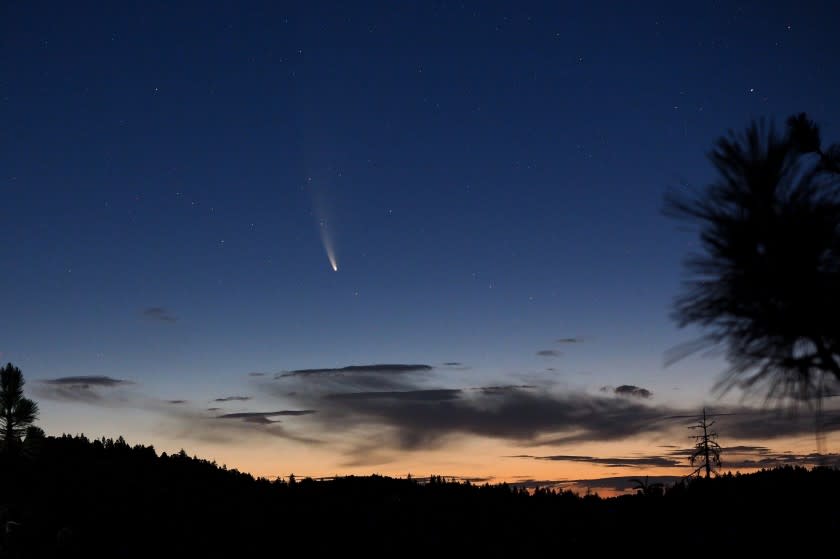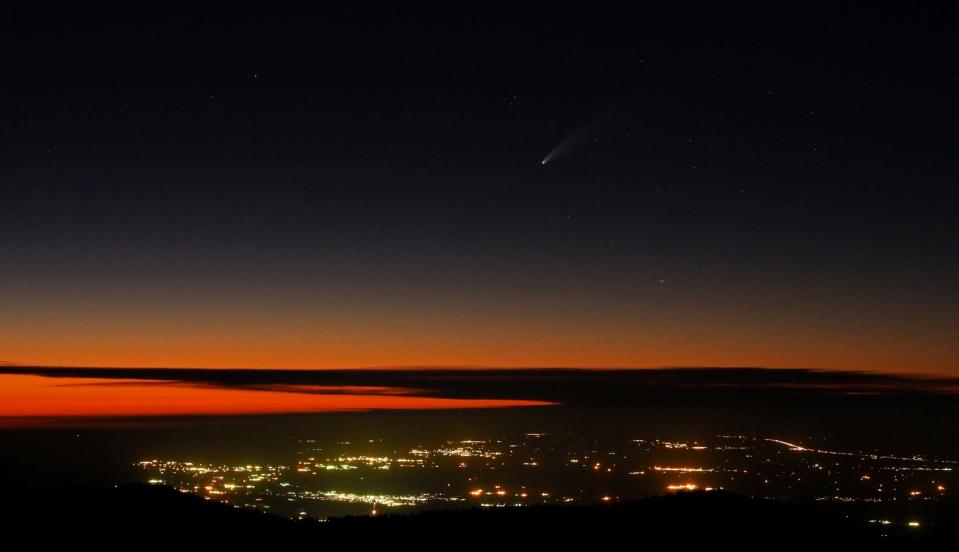Comet NEOWISE is coming close to Earth. Here's how to find it

Comet NEOWISE will come closest to Earth after sunset tonight, passing at a safe distance of 64 million miles. It will be higher in the sky and easier to see. By the end of July, it will fade as it moves away from the sun and Earth, heading back to remote parts of the solar system.
Here are some tips to help you find it in the night sky before it vanishes.
What the comet looks like
Comet NEOWISE is so bright that it can be seen with the naked eye, but that doesn't mean you'll get a perfect view. Looking up from a dark place away from city lights about 90 minutes after sunset, "it looks like a fuzzy star with a little bit of a tail," according to Space.com. Add a pair of binoculars or a small telescope, and the comet and its tail will be easier to spot.

Where to find the comet
In this YouTube video, Lance Lucero, product manager at scope-maker Celestron, explains how to find the comet in the night sky. Start by downloading a stargazing app, such as Celestron's free SkyPortal app, on your phone.
You'll see a list of comets, brightest to faintest, in real-time. You'll also see the celestial coordinates you need to know what direction to look in and where NEOWISE will appear above the horizon, a distance given in degrees. Lucero shows you an easy way to make a rough measurement of where the comet should be, by using an extended arm and your fingers, when you're out at a viewing spot.
The comet's speed and path
Comet NEOWISE is made of equal parts dust and water. NASA scientists estimate the liquid part as the equivalent of "13 million Olympic swimming pools of water." It's moving about 40 miles per second, or 144,000 mph.
It's considered the most popular comet since Comet Hale-Bopp appeared in 1997, and won't return for about 7,000 years. And there's no way that it could smack into the Earth because it's on a different orbital path, according to NASA.
The comet is named C/2020 F3 and added NEOWISE after the acronym for the NASA telescope (the Near-Earth Object Wide-field Infrared Survey Explorer) that discovered it in March.
This story originally appeared in Los Angeles Times.

